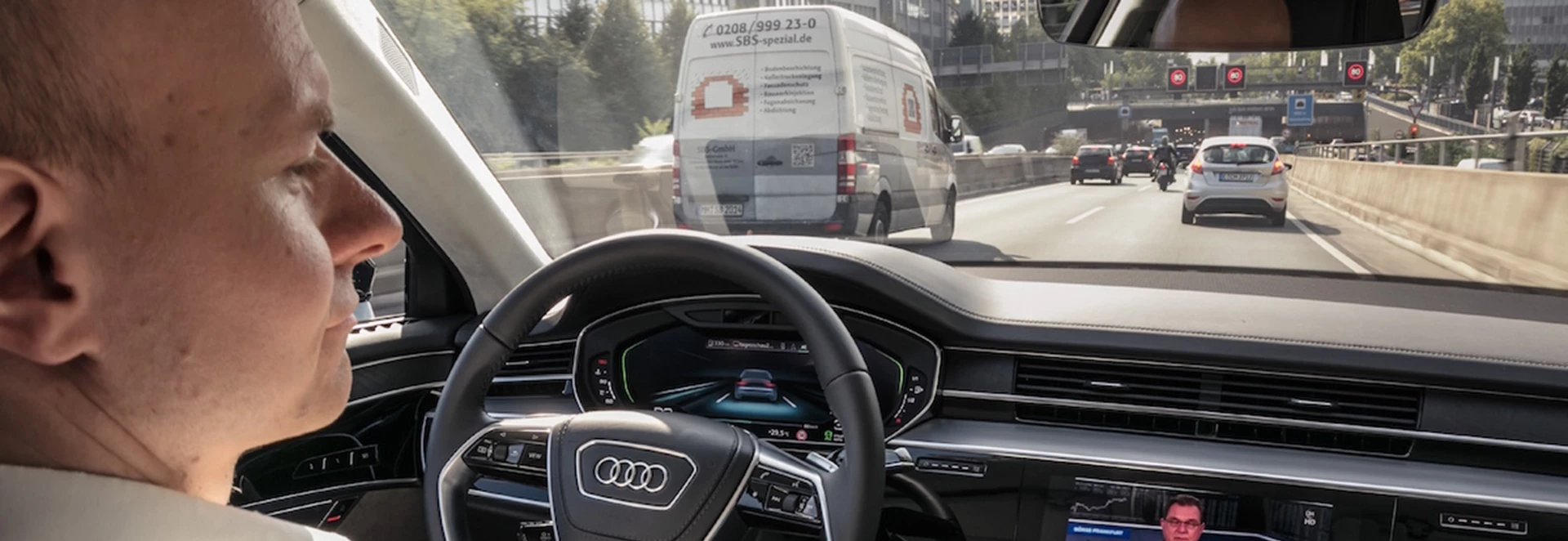The motoring world is inching slowly towards autonomy, as it is arguably safer, better for the environment and it allows people to use their time more efficiently.
But as these vehicles aren’t too common at the moment, the only chance you would have seen such technology working is with KITT out of Knight Rider – something out of science-fiction rather than real life.
However, Audi is one of the pioneering companies in the field of fully-autonomous driving, and one of the first production models to offer a proper taste of driverless cars is the latest version of the Audi A8, which is coming to market later this year.
Although the technology won’t be available on public models for a while yet, we had a go with the traffic jam pilot system in one of the test vehicles.

Traffic jam pilot uses sensors, cameras and laser scanners fitted to the luxury saloon to provide a detailed view of the road ahead, which is then fed to the zFAS central driver assistance control unit for it to monitor. It has been labelled as a Level 3 in terms of Conditional Automation, meaning it can take over all driving tasks.
“We now have a system that knows the environments that it can operate in and will actively tell the driver when he or she can take full advantage of it,” explains Stefan Rietdorf, the Audi engineer in charge of the development of automated driving functions.
There are limitations to the system, though. It can only work at speeds up to 37mph, there must be a barrier between it and oncoming traffic, and there must be no pedestrians around – so realistically it can only be used on motorways and large A-roads in the UK at the moment.
“Traffic jam pilot functionality will only be offered to the driver when it is safe to do so,” explains Rietdorf.
“Unlike other assisted systems, we are allowing the car to take full control of driving duties and potentially allowing the driver to get on with other tasks via the vehicle’s infotainment system. This is the key difference between what we have and what others offer. We have had to work extremely hard to convince the regulators and lawmakers of this world that the system is safe.”

Even though it does take control of the car, the system need the person behind the wheel to stay awake and able to take the wheel when necessary. If the system detects traffic easing and the speed of the vehicles in front increasing, it will alert the driver so they can be ready to take over.
People would be worried if a fault did occur while the system was in use – but Audi has that covered, as they employ multiple fail-safes to ensure the utmost safety standards. Also, if the car detects that the driver is unfit to take the wheel – if they fall ill for example – the vehicle will intelligently slow the car down and apply the hazard lights to warn other road users. If the driver still doesn’t respond, the car will alert the emergency services.
So although the systems may not be ready for widespread use yet, the technology is developing quickly and who knows, in five years’ time the car you drive will be able to take the reins, so you can relax on a long journey or on your commute. It could become very handy indeed.




